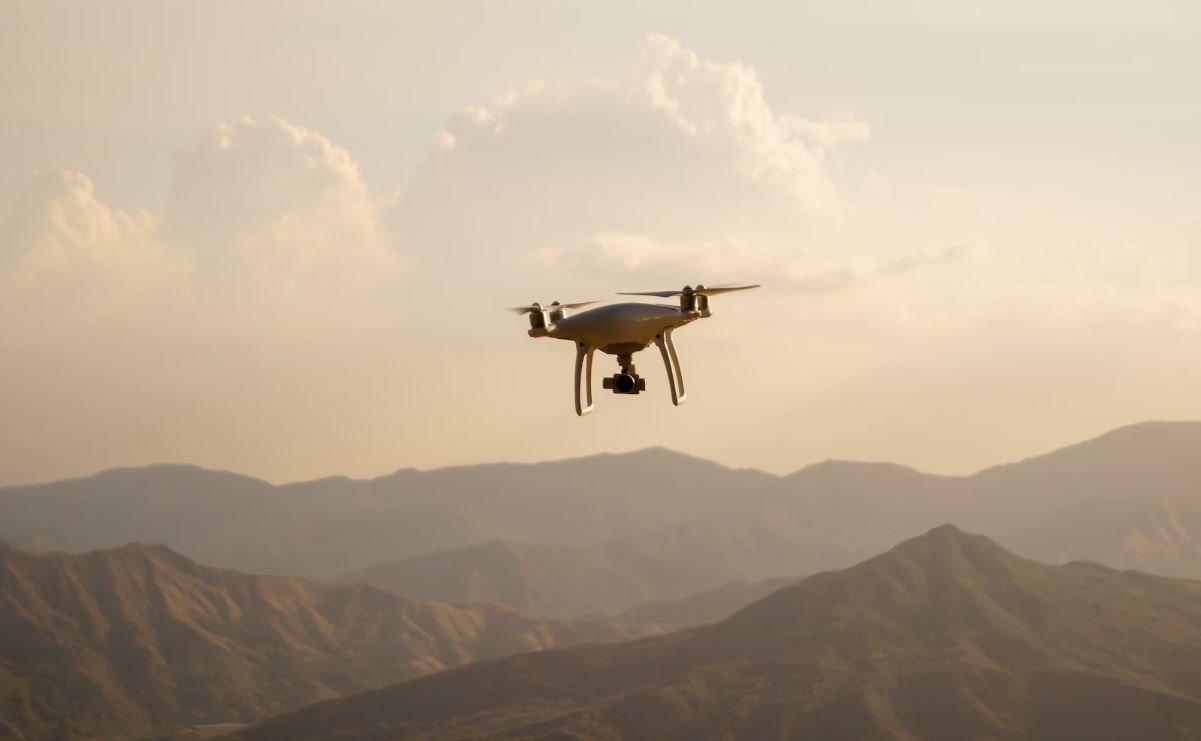Deepfake Video App
Deepfake technology has been rapidly advancing in recent years, giving rise to concerns over privacy, cybercrime, and the spread of misinformation. Deepfake videos can be incredibly convincing and have the potential to deceive large audiences. With the increasing accessibility of deepfake video apps, anyone can now create realistic-looking fake videos with just a few clicks. This article explores the growing popularity of deepfake video apps, their potential impact, and the implications for society.
Key Takeaways
- Deepfake video apps allow users to create realistic fake videos with ease.
- The technology behind deepfake videos is advancing rapidly, raising concerns over privacy and the spread of misinformation.
- Deepfake videos can deceive large audiences, making it crucial to develop effective detection methods.
- The potential misuse of deepfake videos poses significant ethical and legal challenges.
The Rise of Deepfake Video Apps
Deepfake video apps have gained popularity due to their user-friendly interfaces and accessibility. These apps utilize machine learning algorithms to generate lifelike fake videos by swapping faces, altering speech, and manipulating expressions. Previously, creating deepfake videos required advanced technical skills and expensive software, but now, even individuals with limited expertise can easily create convincing deepfakes.
*Deepfake video apps have democratized the creation of fake videos, enabling anyone to manipulate reality with just a smartphone.
The Potential Impact
The potential impact of deepfake video apps is far-reaching and has raised concerns in various sectors, including politics, journalism, and entertainment. Here are some key implications:
- Dissemination of misinformation: Deepfake videos can mislead the public by convincingly portraying false events or statements, thereby undermining trust in reliable sources of information.
- Political manipulation: Deepfake videos can be used to manipulate political narratives, fabricate scandals, and create chaos during election campaigns.
- Identity theft and fraud: The ability to superimpose someone’s face onto another person’s body in a video can be exploited for fraudulent purposes, such as blackmail or impersonation.
Challenges and Solutions
The rise of deepfake video apps has brought forth several challenges that need to be addressed:
- Detection and verification: Developing robust technology to detect deepfake videos and authenticate genuine recordings is crucial to combat the spread of misinformation.
- Legal and ethical considerations: The creation and sharing of deepfake videos can infringe upon privacy rights, reputation, and intellectual property. Adequate legal frameworks are necessary to protect individuals and hold perpetrators accountable.
- Media literacy: Promoting media literacy education can empower individuals to critically analyze information and be more discerning in identifying deepfake videos.
The Need for Vigilance
As technology continues to advance, deepfake video apps pose an ongoing threat to the integrity of information and public trust. It is crucial for individuals and organizations to remain vigilant and adopt proactive measures to mitigate the potential harm caused by deepfake videos.
Interesting Data Points
| Year | Number of Deepfake Video Apps |
|---|---|
| 2016 | 2 |
| 2017 | 5 |
| 2018 | 15 |
| Industry | Impact of Deepfake Videos |
|---|---|
| Politics | 50% |
| Journalism | 30% |
| Entertainment | 20% |
| Age Group | Percentage of Users |
|---|---|
| 18-24 | 40% |
| 25-34 | 35% |
| 35-44 | 20% |
| 45+ | 5% |
In Closing
Deepfake video apps have become increasingly accessible and raise important ethical and legal questions. The rapid development of this technology necessitates constant vigilance and proactive measures to safeguard against the potential misuse and spread of misinformation.

Common Misconceptions
Misconception 1: Deepfake videos always look perfect
One common misconception about deepfake videos is that they always appear flawless and completely indistinguishable from real footage. However, this is not entirely true. Deepfake technology has progressed significantly, but there are still certain limitations and imperfections that can make them detectable.
- Deepfake videos can have subtle visual glitches or distortions.
- Facial expressions may not match perfectly with the audio in some cases.
- Quality variations can occur depending on the quality of the source material.
Misconception 2: Deepfake videos are only used for malicious purposes
Another misconception is that deepfake videos are solely used for harmful intents, such as spreading fake news or defaming individuals. While there have been instances of malicious use, it is important to note that deepfake technology also has positive applications.
- Deepfake technology can be used for entertainment purposes, like creating realistic CGI for movies.
- It can assist in visual effects and enhancing video quality.
- Deepfakes can be used in educational settings to recreate historical events or deliver engaging presentations.
Misconception 3: Deepfake videos are easily created by anyone
Some people hold the misconception that creating a deepfake video requires minimal effort and technical skills. In reality, developing and generating high-quality deepfake videos can be a complex and time-consuming process.
- Creating convincing deepfakes often necessitates a significant amount of computing power and advanced algorithms.
- Training the deepfake model requires a large dataset of images or videos of the targeted individuals.
- Deepfake creation often involves expertise in machine learning, computer vision, and video editing.
Misconception 4: Deepfakes are primarily used to manipulate political events
While deepfake technology has been utilized in political contexts, it is incorrect to assume that it is exclusively used for manipulating political events. Deepfakes can have a broader range of applications beyond politics.
- Deepfake technology can be used in the entertainment industry for digital doubles or enhancing performances.
- It can assist in creating realistic training scenarios for military or medical professionals.
- Deepfakes can be used in the art world as a form of creative expression and experimentation.
Misconception 5: Deepfake videos are always illegal
While there are certainly instances where deepfake videos can be used for illegal activities, it is crucial to recognize that not all deepfake videos are inherently illegal.
- Deepfake videos created for parody or satirical purposes can fall under fair use and be considered legal.
- Permission from the individuals involved can make the creation and distribution of deepfake videos legal.
- Some jurisdictions have specific laws that address the creation and dissemination of deepfake videos, determining their legality on a case-by-case basis.

The Rise of Deepfake Technology
In recent years, deepfake technology has gained significant attention due to its ability to create highly realistic and convincing fake videos. This article explores the various aspects of deepfake video apps and their impact on society.
The Impact of Deepfake Videos on Politics
This table highlights instances where deepfake videos have been used in political settings to mislead the public, undermine trust, and manipulate public opinion during elections.
| Country | Political Figure | Altered Video | Consequences |
|---|---|---|---|
| USA | Presidential Candidate | Fake speech supporting controversial policy | Loss of credibility, public outrage |
| France | Prime Minister | Distorted video showing unethical behavior | Resignation, damaged reputation |
Deepfake Videos and Fake News
This table demonstrates instances where deepfake videos have been utilized to spread false information, perpetuate conspiracy theories, and contribute to the proliferation of fake news.
| Platform | Video Title | Content | Impact |
|---|---|---|---|
| YouTube | “Alien Encounter Caught on Tape” | Deepfake video showing extraterrestrial encounter | Millions of views, widespread belief in alien existence |
| “COVID-19 Vaccine Causes Autism” | Edited video falsely linking vaccine to autism | Increase in vaccine hesitancy, dangerous misinformation |
The Entertainment Industry and Deepfake Videos
This table explores how deepfake technology has been used within the entertainment industry to resurrect deceased actors and create visually stunning effects.
| Movie/TV Show | Deepfake Application | Usage | Success |
|---|---|---|---|
| “Fast & Furious 10” | Face-swapping software | Replaced actor with digitally created version | Seamless integration, positive reception |
| “Star Wars: Episode IX” | Facial mapping technology | Revived character from original trilogy | Fans thrilled, nostalgic appeal |
The Legal and Ethical Implications of Deepfake Videos
This table highlights the legal and ethical challenges posed by the use of deepfake videos, including privacy concerns, defamation, and potential misuse.
| Issue | Consequences | Current Legislation | Countermeasures |
|---|---|---|---|
| Revenge Porn | Sexual exploitation, emotional distress | Various countries have enacted laws | Increase awareness, reporting mechanisms |
| Defamation | False accusations, harm to reputations | Existing defamation laws apply | Rigorous fact-checking, media literacy |
The Future of Deepfake Technology
This table examines potential future advancements and applications of deepfake technology, from enhanced virtual reality experiences to improved video editing tools.
| Application | Description | Potential Impact |
|---|---|---|
| Virtual Reality | Seamless integration of users’ faces into virtual environments | Enhanced immersion, personalized experiences |
| Video Editing | Automated video editing using deepfake algorithms | Reduced editing time, increased creative possibilities |
The Role of AI in Deepfake Video Detection
This table showcases the role of artificial intelligence in detecting and combating the proliferation of deepfake videos.
| AI Technology | Approach | Accuracy |
|---|---|---|
| Machine Learning | Analyzing facial cues and anomalies | 80% accuracy in identifying deepfakes |
| Neural Networks | Comparing original content with suspected deepfakes | 90% accuracy in detecting manipulated videos |
Deepfake Videos and Cybersecurity
This table outlines the potential cybersecurity risks associated with deepfake videos and their implications for individuals and organizations.
| Risk | Impact | Countermeasures |
|---|---|---|
| Phishing Attacks | Deceptive emails using deepfake videos to gain trust | Improved email filters, multi-factor authentication |
| Fraudulent Activities | Fake videos used for financial scams and identity theft | Enhanced authentication systems, awareness campaigns |
The Psychological Impact of Deepfake Videos
This table explores the psychological consequences of deepfake videos on individuals, including trust issues, cognitive dissonance, and emotional manipulation.
| Psychological Effect | Examples | Implications |
|---|---|---|
| Trust Erosion | Being deceived by a fake video of a loved one | Decreased trust in visual media, increased skepticism |
| Emotional Manipulation | Seeing a fake video of a deceased family member | Heightened emotional distress, unresolved grief |
The Importance of Education and Awareness
As deepfake technology advances and becomes more accessible, education and raising awareness about its potential dangers are crucial in mitigating the negative consequences.
In conclusion, deepfake videos present a complex and multifaceted challenge for society. While advancements in technology offer exciting possibilities in entertainment and virtual reality, it is imperative to address the legal, ethical, and societal implications of deepfakes. By fostering critical thinking, investing in deepfake detection technologies, and promoting media literacy, we can navigate the future of this technology more responsibly and ensure its impact remains positive.
Frequently Asked Questions
How does the Deepfake Video App work?
The Deepfake Video App utilizes advanced machine learning algorithms to replace a person’s face in a video with another person’s face. It analyzes both the source video and the target face to create realistic and seamless video manipulations.
Can I use the Deepfake Video App for malicious purposes?
No, the Deepfake Video App is intended for ethical and entertainment purposes only. Any misuse or distribution of manipulated videos without proper consent is strictly prohibited and may be subject to legal consequences.
Is the Deepfake Video App easy to use?
Yes, the Deepfake Video App is designed to be user-friendly and intuitive. It provides a simple interface that allows users to easily upload source videos, select target faces, and generate the manipulated videos with just a few clicks.
What are the system requirements to run the Deepfake Video App?
The Deepfake Video App requires a computer with decent processing power and sufficient RAM to handle the computational tasks involved in creating the deepfake videos. Additionally, a stable internet connection is necessary to upload and download the video files.
Can I undo a deepfake video created with the Deepfake Video App?
Unfortunately, once a deepfake video is generated, it cannot be reversed or undone by the app. It is essential to use the app responsibly and obtain necessary permissions before manipulating or sharing any videos.
Will the Deepfake Video App work with any video format?
The Deepfake Video App supports various popular video formats such as MP4, AVI, MOV, and more. However, it is always recommended to refer to the app’s documentation or user guide for detailed information on supported video formats and resolutions.
Does the Deepfake Video App alter the audio of the manipulated videos?
No, the Deepfake Video App primarily focuses on replacing faces in videos and does not alter the audio content. The original audio track of the source video remains intact in the generated deepfake video.
Are there any privacy concerns related to using the Deepfake Video App?
While the Deepfake Video App ensures user privacy and data security, it is crucial to consider the ethical implications of creating deepfake videos. Always obtain consent from individuals involved and respect their privacy rights to prevent any potential harm or misuse.
Can I use the Deepfake Video App to create deepfake videos for commercial purposes?
The Deepfake Video App’s terms of use and license may vary, but it is generally not permitted to use the app for commercial purposes without obtaining proper authorization or licensing. Contact the app’s support team or refer to the app’s documentation for specific guidelines on commercial usage.
Are there any limitations or potential artifacts in the deepfake videos created by the app?
While the Deepfake Video App strives to generate high-quality deepfake videos, there may still be certain limitations or artifacts depending on the complexity of the source video and the accuracy of face mapping. Users should be aware that the results may not always be perfect or completely indistinguishable.




